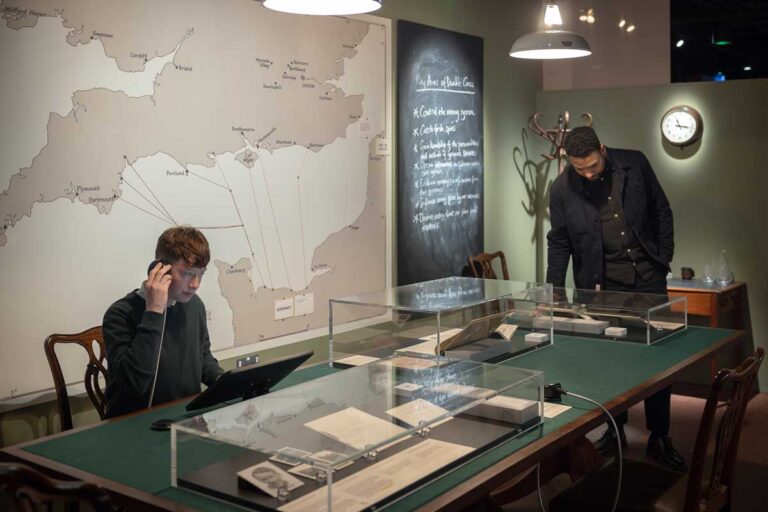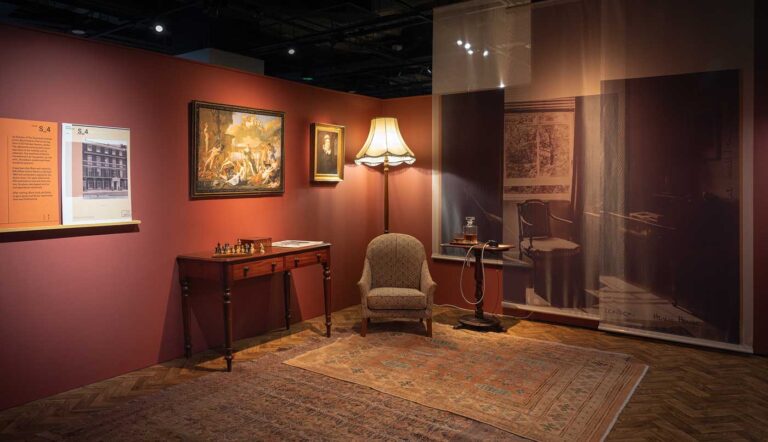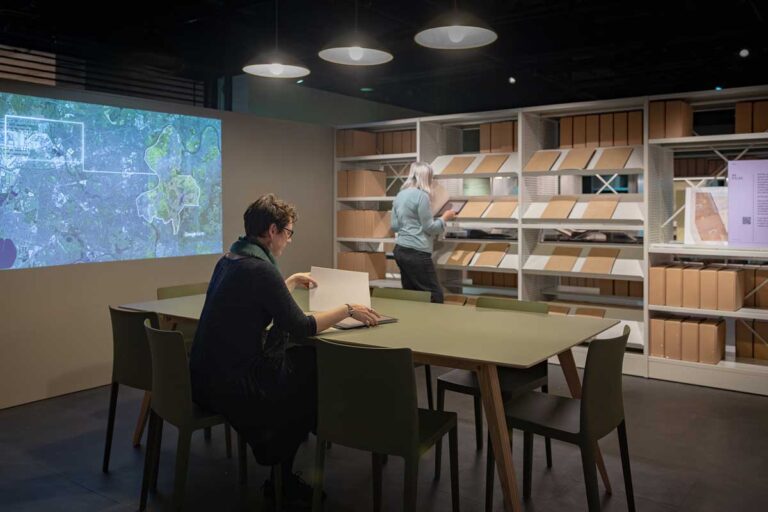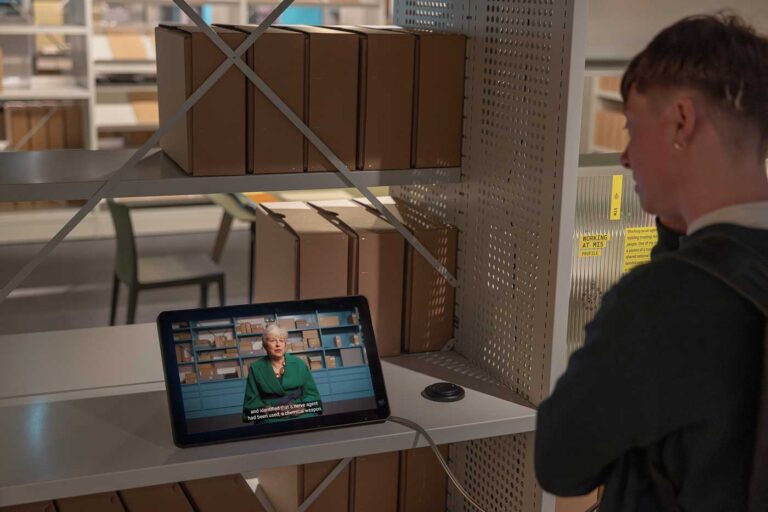From secret codes to never-before seen devices, here’s five reasons to visit our current MI5: Official Secrets exhibition.
1. Discover how a bizarre message about dentistry helped D-Day succeed
During the Second World War MI5 ran an extensive network of double agents that passed deceptive information to Germany.
In a section of the exhibition that explores this daring operation, you can find a note confirming that agent BRONX (aka Elvira Chaudoir) had sent a telegram to her German handlers saying, ‘Send fifty pounds quickly. I need it for my dentist’.
This strange demand was in fact a code that sought to persuade her contact to retain forces in the wrong part of France, keeping them away from the planned D-Day landing sites in Normandy.

2. Step into the scene of Anthony Blunt’s confession to being a Soviet spy
As Director of The Courtauld Institute of Art, Anthony Blunt lived in a flat on the top floor of 20 Portman Square, an eighteenth-century town house which housed the institute and its collection.
It was here that Blunt was visited by MI5 officer Arthur Martin on 23 April 1964 and confessed to having been a spy for the Soviet Union.
This location is evocatively recreated in the exhibition alongside a number of files relating to Blunt’s case – including this one from 1973 released from MI5 just this January, recording the reaction of the Queen after being informed that her former art advisor had been a double agent.

3. Find MI5’s first-ever camera, on display for the first time
For this exhibition MI5 have loaned nearly two dozen items, none of which have ever been shown to the public before.
Among them is a pocket-sized Houghton Ensignette, the first camera owned by MI5. This device enabled them to conduct that classic spy activity of photographing people under surveillance.
The camera was purchased by William Melville – or ‘M’ – shortly after the agency was established in March 1909 by the Committee of Imperial Defence. You can see this foundational document on show not far from the camera, as the first item displayed in the exhibition.

4. Sift through copies of MI5 files for yourself
At the heart of the exhibition, you can select a folder from the shelves and flick through replicas of the real MI5 files that have been released to The National Archives since 1997.
Examine surveillance reports, transcripts of bugged conversations, confessions, photographs and many other records made by MI5 about the people who they were concerned posed a threat to national security.
You could start with First World War German spies such as Karl Ernst – the ‘Postman’ for German intelligence – who operated out of his barber’s shop on Caledonian Road, North London, and work your way through to the Krogers, a seemingly average couple living in the London suburb of Ruislip who were in fact KGB agents.

5. Hear how Downing Street and MI5 work together today
Turning to more recent times, in an interview filmed especially for the exhibition, watch former Prime Minister Theresa May recount how she learned of the 2018 botched attempt to assassinate Sergei Skripal, a former Russian double agent for MI6, a with deadly nerve agent.
The Salisbury Poisonings marked the first known use of a nerve agent in a European city since the Second World War – a Cold War-esque spy story in which a quiet English city became the epicentre of a tragic international incident.
This video is one of several exclusive short films available to watch in the exhibition. Don’t miss the introduction by the current Director General of MI5, Sir Ken McCallum, and be sure to take the time to listen Christopher Andrew, who was made MI5’s official historian in 2002 and was given virtually unrestricted access to the Security Service’s archives.

Plan your visit today! See our website to find out how to visit MI5: Official Secrets.